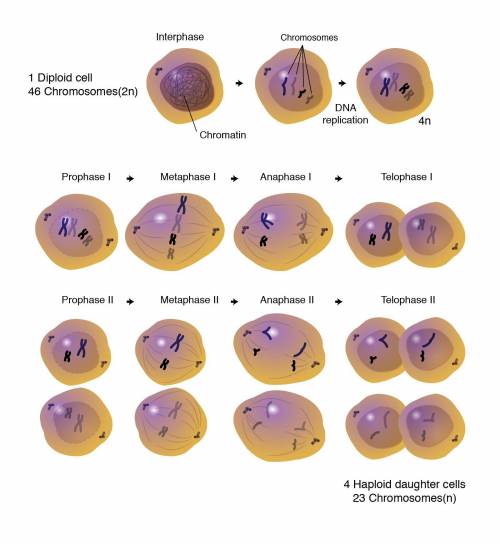
Biology, 22.04.2020 01:40, sreyasusanbinu
For sexually reproducing diploid parent cells, which of the following statements best explains the production of haploid cells that occurs in meiosis but not in mitosis?Separation of chromatids occurs once, and there is one round of cell division in meiosis. ASeparation of chromatids occurs twice, and there are two rounds of cell division in mitosis. BSeparation of chromatids occurs once, and there are two rounds of cell division in meiosis. CSeparation of chromatids occurs twice, and there is one round of cell division in mitosis.

Answers: 2
Other questions on the subject: Biology




Biology, 22.06.2019 09:00, Maria3737
Hurry i need your (100 points) 1) what are the responsibilities of the region of the brain highlighted below? (picture located below) the highlighted portion is at the rear base of the brain, behind the brain stem. regulating homeostasis, hunger and eating, thirst and drinking, and many other functions of basic survival. coordinating movement and balance by using information from sensory nerves, including hand-eye coordination. controlling voluntary body movements, processing information from sense organs, thoughts, and learning abilities. regulating important involuntary bodily functions such as blood pressure, heart rate, breathing, and swallowing. 2)which of the following systems or structures is correctly paired with its function? neurons - brain cells that control thoughts, calculations, and memory cerebral cortex - portion of the brain that controls involuntary body movement peripheral nervous system - carries impulses to and from the central nervous system central nervous system - carries information from the nerves to the muscles and glands
Answers: 1
Do you know the correct answer?
For sexually reproducing diploid parent cells, which of the following statements best explains the p...
Questions in other subjects:


History, 21.04.2020 22:30





English, 21.04.2020 22:30










